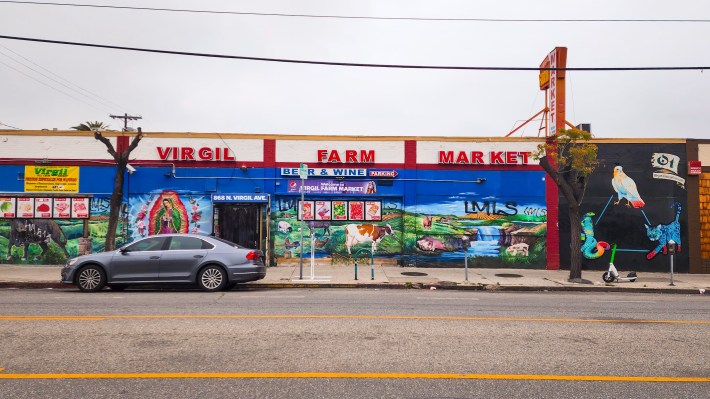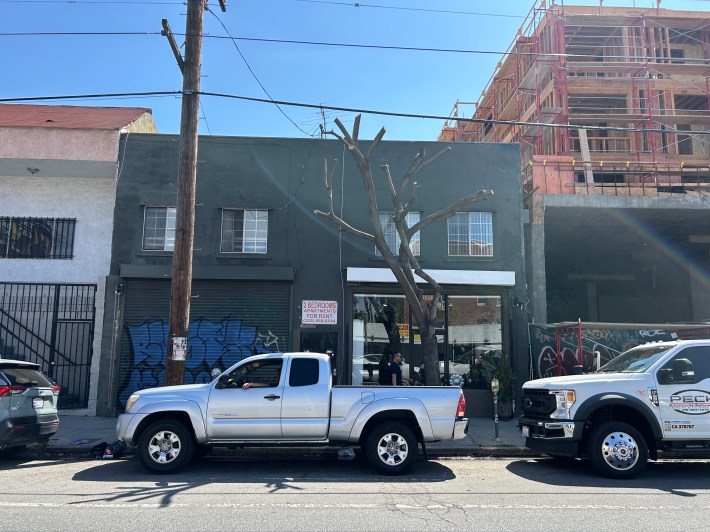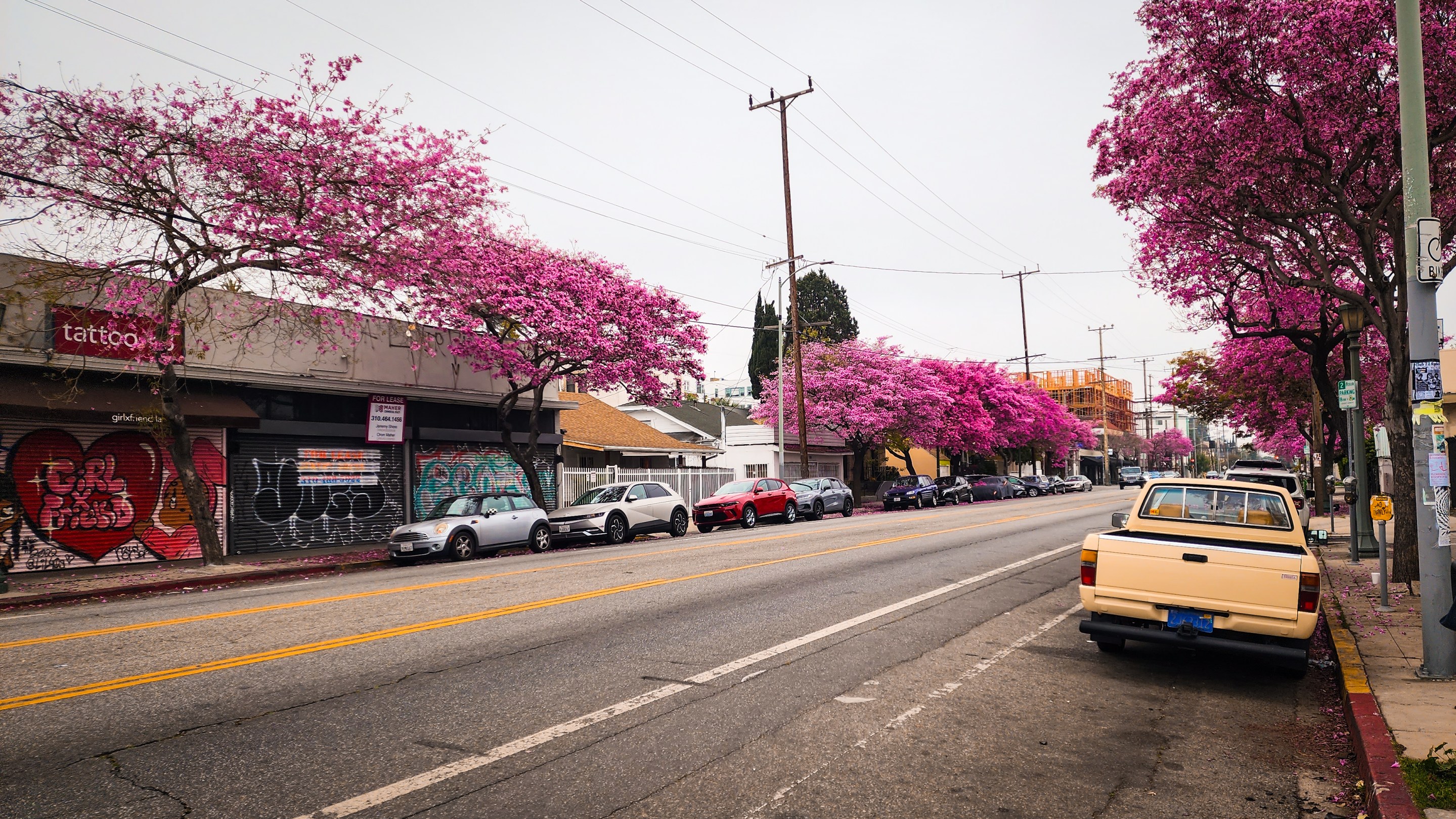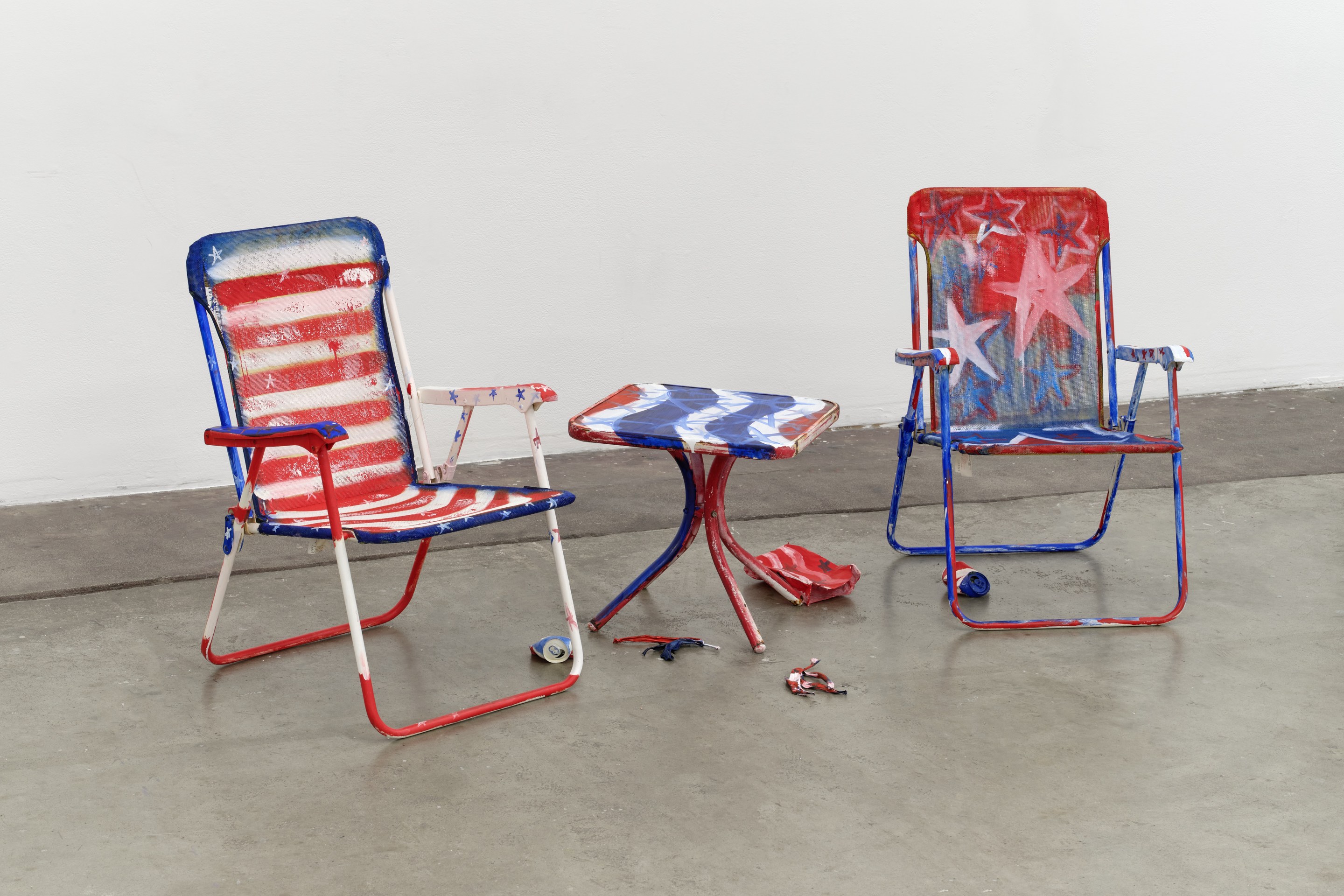Two East Hollywood property owners were cited for illegally trimming three of Virgil Village’s historic pink trumpet trees on Virgil Avenue “excessively beyond recovery,” according to a spokesperson for the Bureau of Street Services (StreetsLA).
The decades-old trees were all reduced to a few stubby branches and don’t appear to have much chance of growing back.
Daniel Halden, a senior advisor for StreetsLA, confirmed with L.A. TACO that “no permits were issued for the excessive tree trimming” at either location.

“At both locations, StreetsLA followed our standard procedure and issued Notices to Correct (NTC) requiring 2:1 replanting due to the trees being pruned excessively beyond recovery,” Halden said in a written statement to L.A. TACO. “This gives the adjacent property owner the ability to correct the violation on their own accord.”
Halden said that the property owner at 868 North Virgil Avenue, the building adjacent to two of the excessively trimmed trees, did not respond to the notice and the matter was forwarded to the city attorney’s Administrative Citation Enforcement (ACE) program, a non-criminal approach to resolving “nuisance abatement and quality of life offenses.”
According to Halden, an “administrative hearing” was scheduled for mid-April, but the property owner never showed up.
“If ACE is unsuccessful in achieving a resolution, the matter may be referred to the city attorney for a criminal filing,” Halden said.

In the case of the single pink trumpet tree (Tabebuia rosea) in front of 718 Virgil Avenue, Halden told L.A. TACO that the excessive trimming “was reported more recently,” so they hope that the property owner complies with the no-fee notice to correct, before things escalate to an administrative hearing (which comes with a fee).
“Compliance is always our preferred outcome and goal in these types of situations,” Halden said.
L.A. TACO first learned about these illegal tree trimmings after Gary Benjamin, a Virgil Village resident who works as a land use consultant, brought it to our attention. Benjamin lives close to the two trumpet trees trimmed between Normal and Burns Avenues and witnessed the trees being cut back with his own eyes, last August.
Unfortunately, he had somewhere to go and didn’t have time to confront the tree trimmers. So he snapped a few photos of the workers and cut back trees instead, and filed a complaint with the city soon after.

“I reached out to the City's Urban Forestry Division (UFD) in August to report the illegal trimming, and they confirmed that it was unauthorized,” Benjamin wrote in an email to L.A. TACO in early April.
“One of my concerns from the start was that if other people saw that there was basically no consequences for cutting down the trees for the purposes of increasing storefront visibility, then other businesses might say ‘OK cool, we can do that,’” Benjamin said during a May interview with L.A. TACO.
Eight months after witnessing the trees being trimmed in August, Benjamin noticed on April 10 that a trumpet tree in front of a new hair salon on Virgil Avenue was similarly trimmed to the point of no return.
April was a tough month for L.A.'s vulnerable tree canopy.
On April 19, a man chainsawed a bunch of trees in Downtown. Days later, L.A. Mayor Karen Bass revealed a budget proposal that would dramatically reduce tree funding and increase the amount of time that it takes the city to respond to these "tree emergencies."
“These trees are pretty iconic,” Benjamin noted. “It is a unique thing for this neighborhood and it was a community led initiative … it is kind of a shame that people would cut those and certainly would be a shame if that became a trend.”

The historic pink trumpet trees lining Virgil Avenue were planted in the 1990s by community members and have since become one of the defining features of the mostly working-class, Latino neighborhood. The trees are known for their vibrant pink flowers that typically bloom in early spring.
In her 2022 photo essay detailing the trees' origins, Samanta Helou Hernandez, a journalist, photographer, and Virgil Village chronicler, explains how, in 1995, Virgil Avenue was transformed from a dimly lit, tree-less street into what it is today: a vibrant avenue composed of lush trees and hand-painted murals.
The trees and additional improvements were the result of community members coming together and deciding what they wanted their neighborhood to look like, during a period when outsiders referred to Virgil Avenue as “a war zone.”
“At the time, Virgil Avenue was a car-centric thoroughfare that took commuters from wealthier Los Feliz to other parts of the city,” Hernandez writes. “It was badly lit and basically tree-less. Families in the neighborhood walking home from school had very little shade on hot days, and very little lighting at night, making it unsafe for people walking alone, particularly women and children.”
After applying for a Los Angeles Neighborhood Initiative (LANI) grant in 1995, the community received funding for trees, lighting, and painted murals. The trumpet trees were picked by a coalition of Mexican, Salvadoran, Filipino, Japanese, Black, and Ukrainian residents for their sturdiness and colorfulness. Some of the trees were even given names.
“The trees were a nice thing that the community fought to get,” Benjamin said. In their opinion, the punishment doesn’t fit the crime.
“Trees that have been there for 30 years … to replace them 2:1 … that doesn’t seem nearly substantial enough,” he said. “If you’re just going to get a twig of a [new] tree. Then even a 2:1 replacement doesn’t seem adequate.”
“Some of these fines are so minor compared to what the impact of ruining the trees has on the neighborhood,” he added.







